Designing a new medical device is a complex journey. Successfully moving from a rudimentary concept to a market-ready product requires meticulous planning, a deep understanding of current regulations, and a user-centered approach.
Each stage of the development process, from ideation through to production, plays a crucial role in ensuring that the new device is safe, effective, and meets the needs of both healthcare professionals and patients. The design phase lies at the core of this process and significantly contributes to the product’s success in the medical industry.
- What is medical device design?
- What are the stages of the medical device design process?
- What are the benefits of an iterative design process?
- What key aspects should be considered in user-centered design?
- What role does risk management play in medical device design?
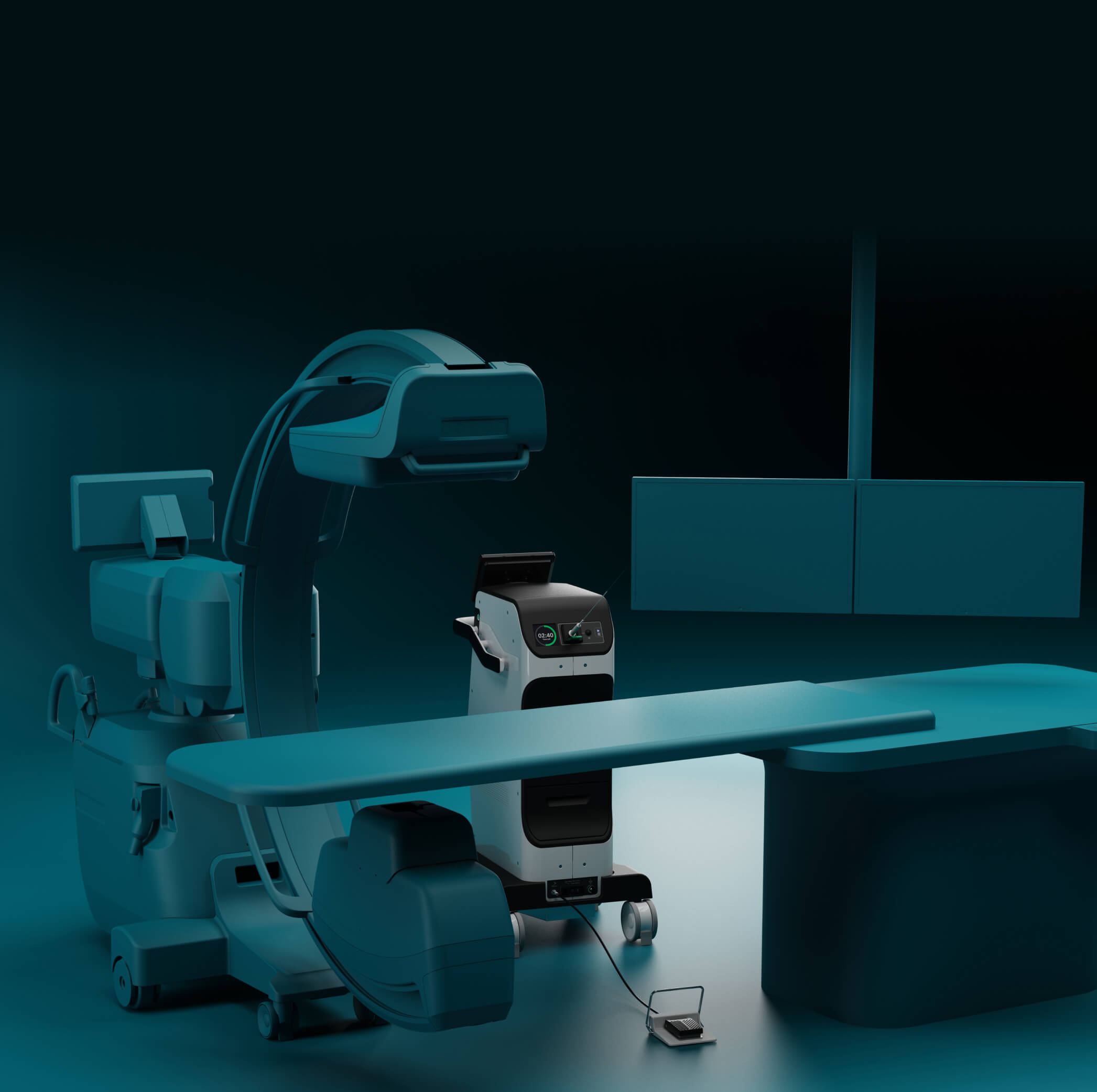
What is Medical Device Design?
Medical device design focuses on developing devices or softwares that diagnose, treat, or prevent medical conditions. Operating in a high-risk environment, it emphasizes safety, efficiency, and user satisfaction. To achieve these objectives, multidisciplinary collaboration is crucial throughout the development process, ensuring the device meets user needs, enhances usability, and complies with regulatory requirements based on its classification.
The Key Stages of The Medical Device Design Process
Medical device design centers specifically on transforming a concept into a functional design. Here are the key stages:
1
User Needs Identification & Use Specification
Understanding user needs and challenges is the starting point for medical device design. To identify specific problems related to use, or gaps in existing solutions, it is essential to conduct research and engage with users to gather their insights.
It’s also crucial to consider the operating environment, including lighting, ambient sounds, the level of urgency, and the presence of other devices, as these factors can influence how the device is used.
At this stage, designers create personas representing user archetypes, as well as a user journey map to visualize how the product will be used in real-life contexts.
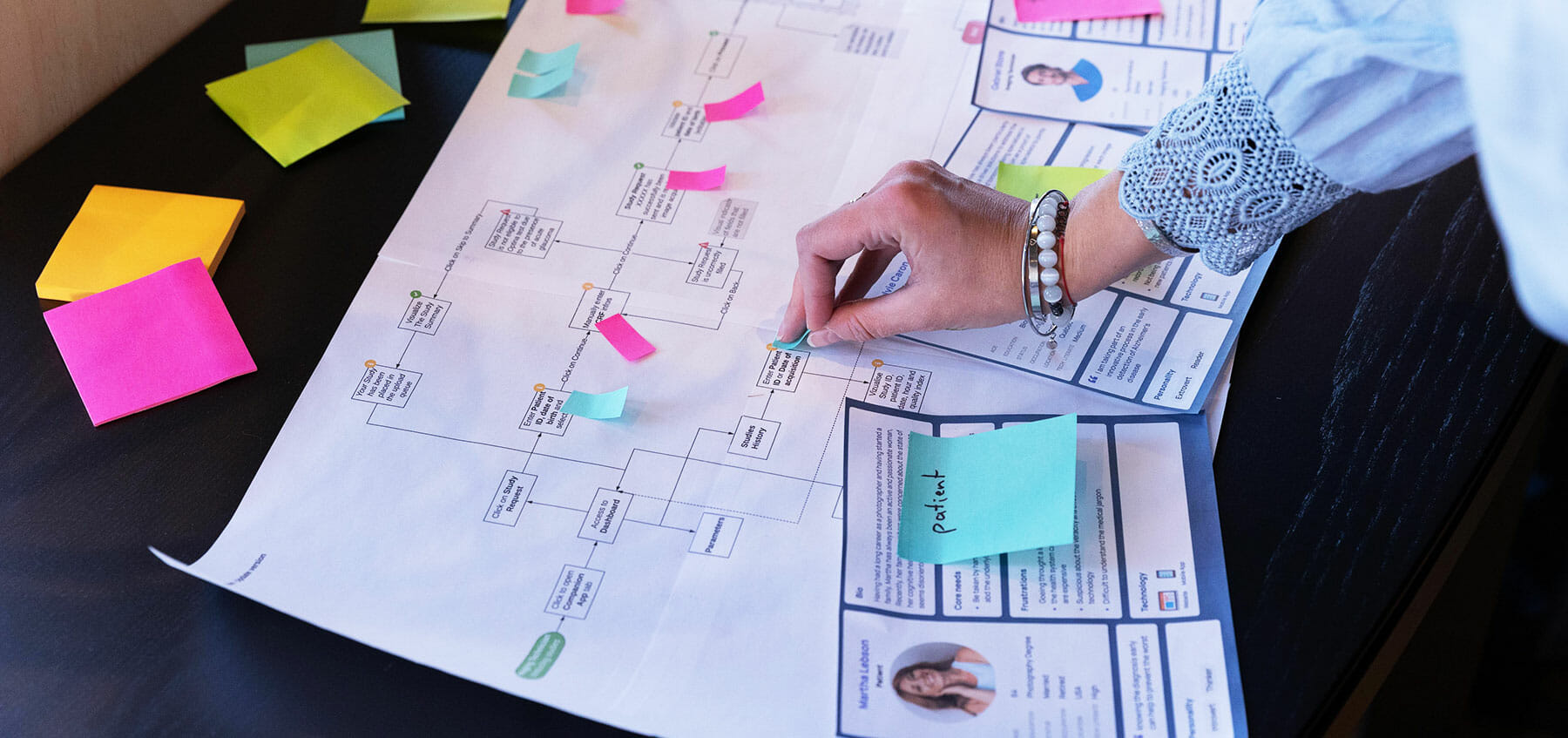
2
Conceptual Design and Ideation
The initial concepts are developed based on the feedback received from users in the previous stage. Designers focus on creating innovative solutions that address user needs while ensuring technical feasibility. To achieve this, they generate multiple ideas using sketches, 3D modeling, and study prototypes.
3
Preliminary Prototyping
This stage allows us to iterate and make quick adjustments to the design before diving into the details. Different design options are explored using preliminary prototypes or low-fidelity mock-ups, which enable designers to conduct initial tests and gather early feedback from potential users.
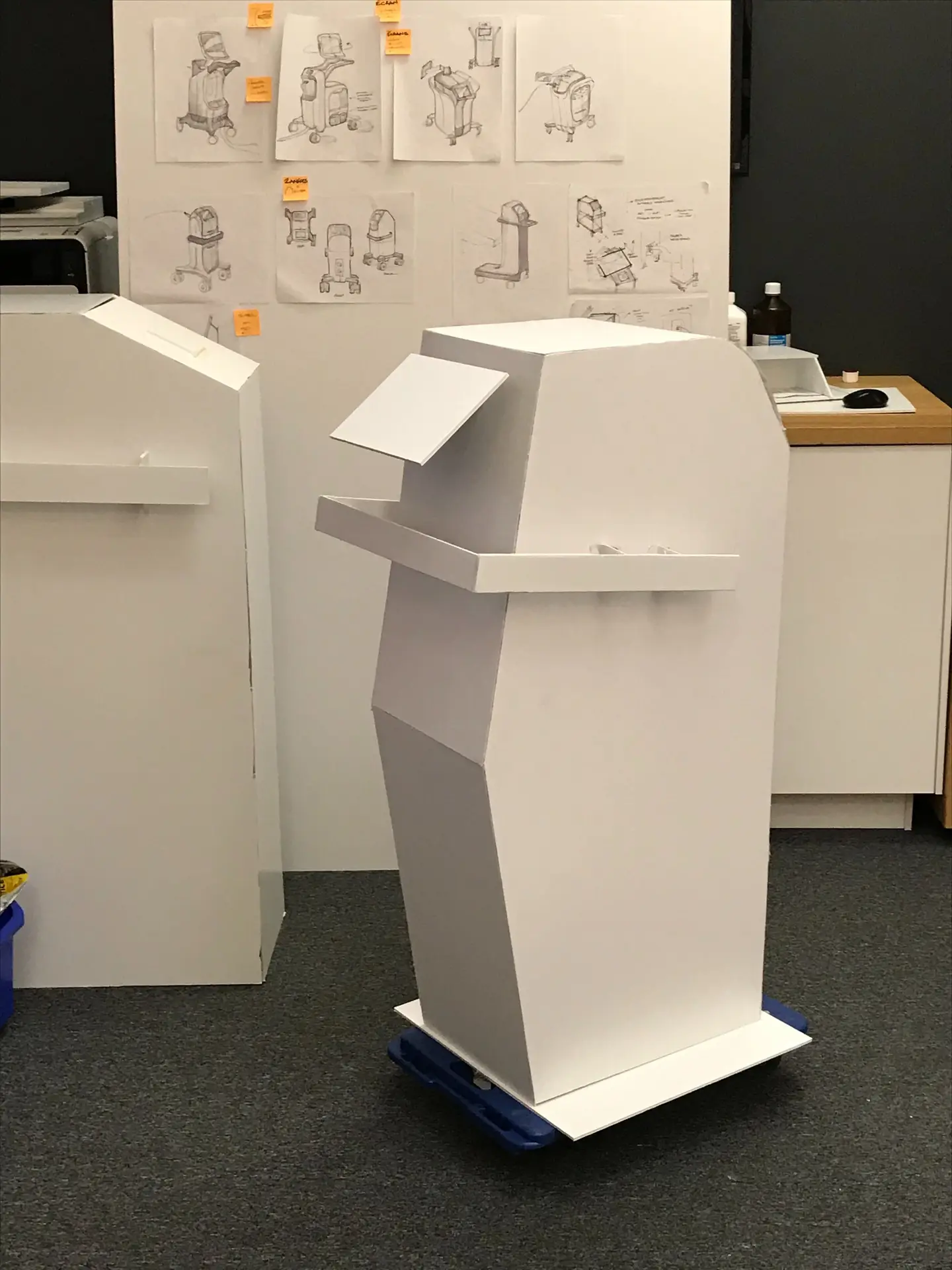
4
Detailed Design
Once the solution concept is defined, the detailed design phase begins. High-fidelity prototypes are developed based on precise design inputs, such as technical specifications and user requirements. During this phase, designers create parts for manufacturing while addressing technical problems.
5
Formative Evaluation
This stage is crucial for identifying potential use-related risks and making the necessary adjustments to mitigate them. To achieve this, designers conduct formative evaluations to assess the device’s usability by observing users’ interactions with the design.
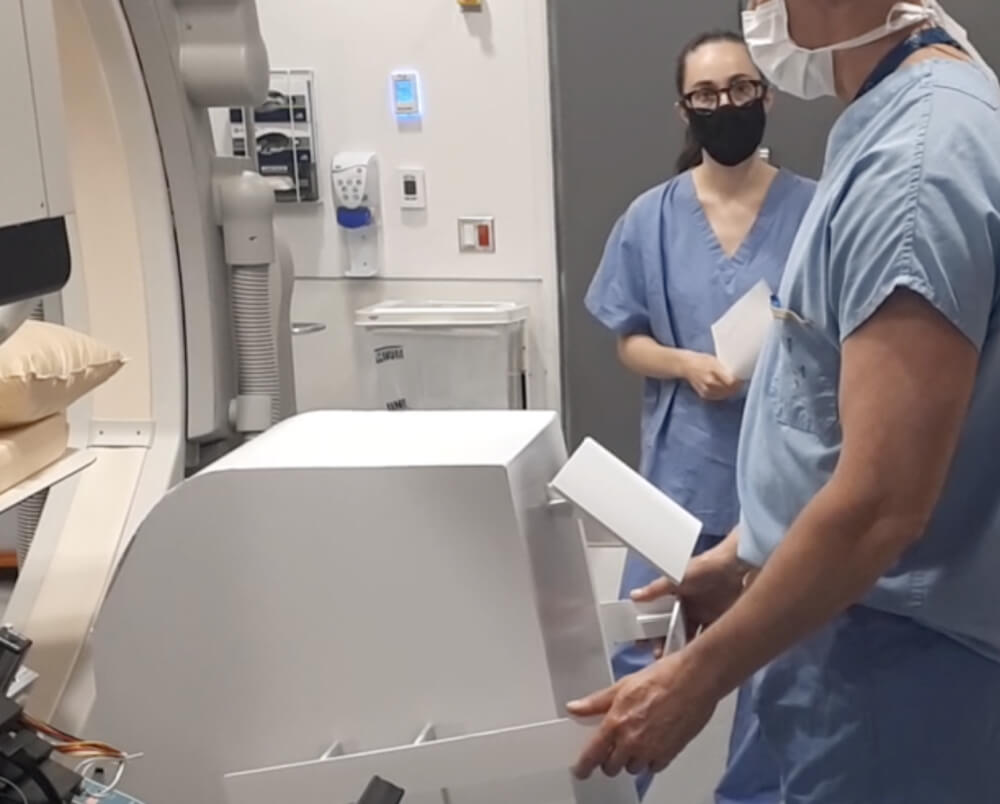
6
Final Prototyping
The design is refined iteratively based on feedback from user tests, resulting in a final prototype that incorporates all necessary adjustments from the previous phase. At this stage, designers move progressively closer to achieving the final product.
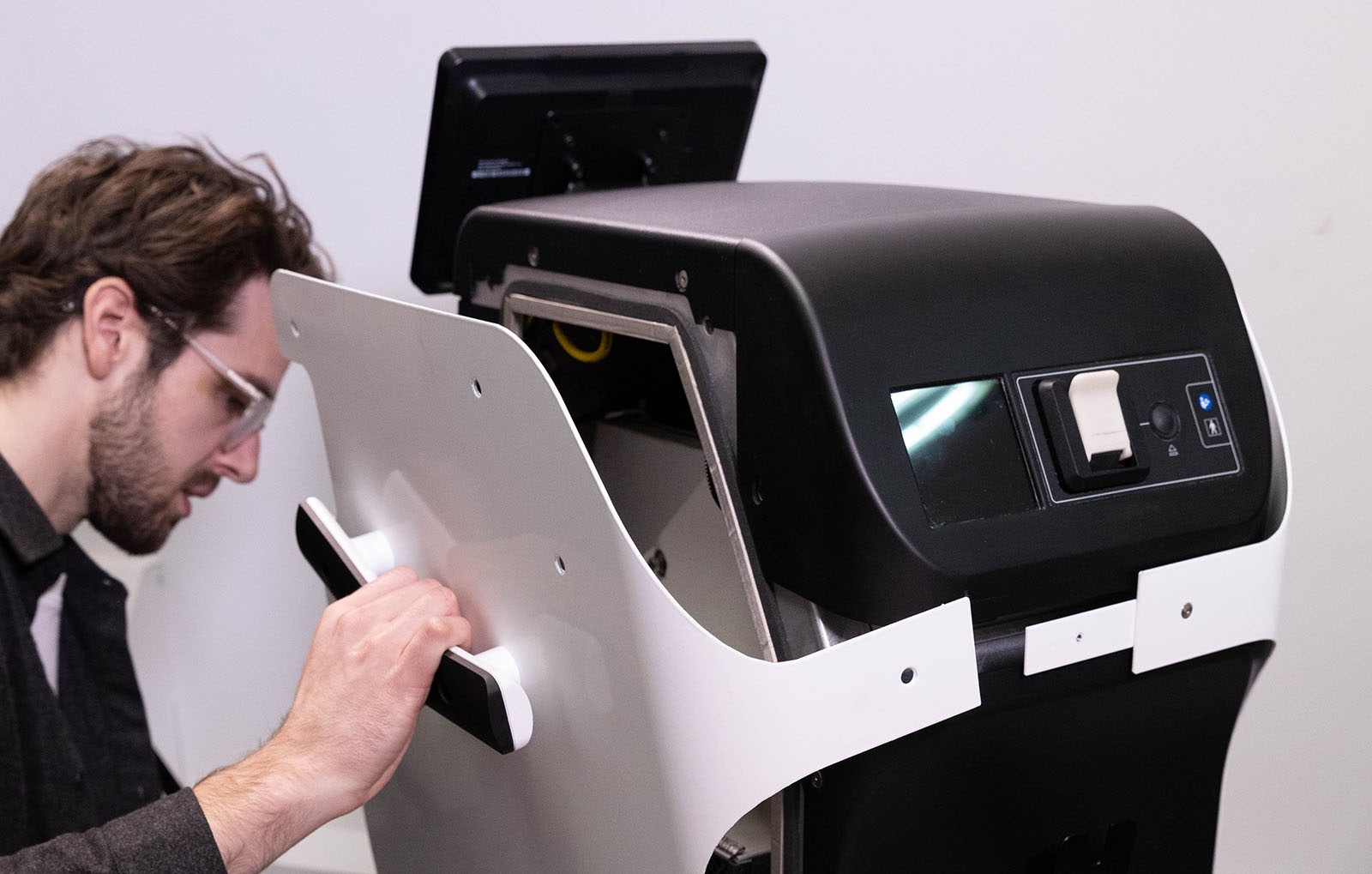
7
Design Verification
The aim of this stage is to confirm that the device has been designed correctly, ensuring that it complies with all the previously defined specifications and requirements (design inputs).
8
Design Validation
The purpose of validation is to ensure that the product is the right one. Designers use the results of summative evaluations to confirm that it fulfills its intended functions and meets user needs in real-life scenarios.
9
Design Transfer Documentation
Once the design is finalized, the designers gather all the documentation in the Design History File (DHF). This documentation is essential for ensuring that the product can be manufactured while maintaining the integrity and quality of the design.
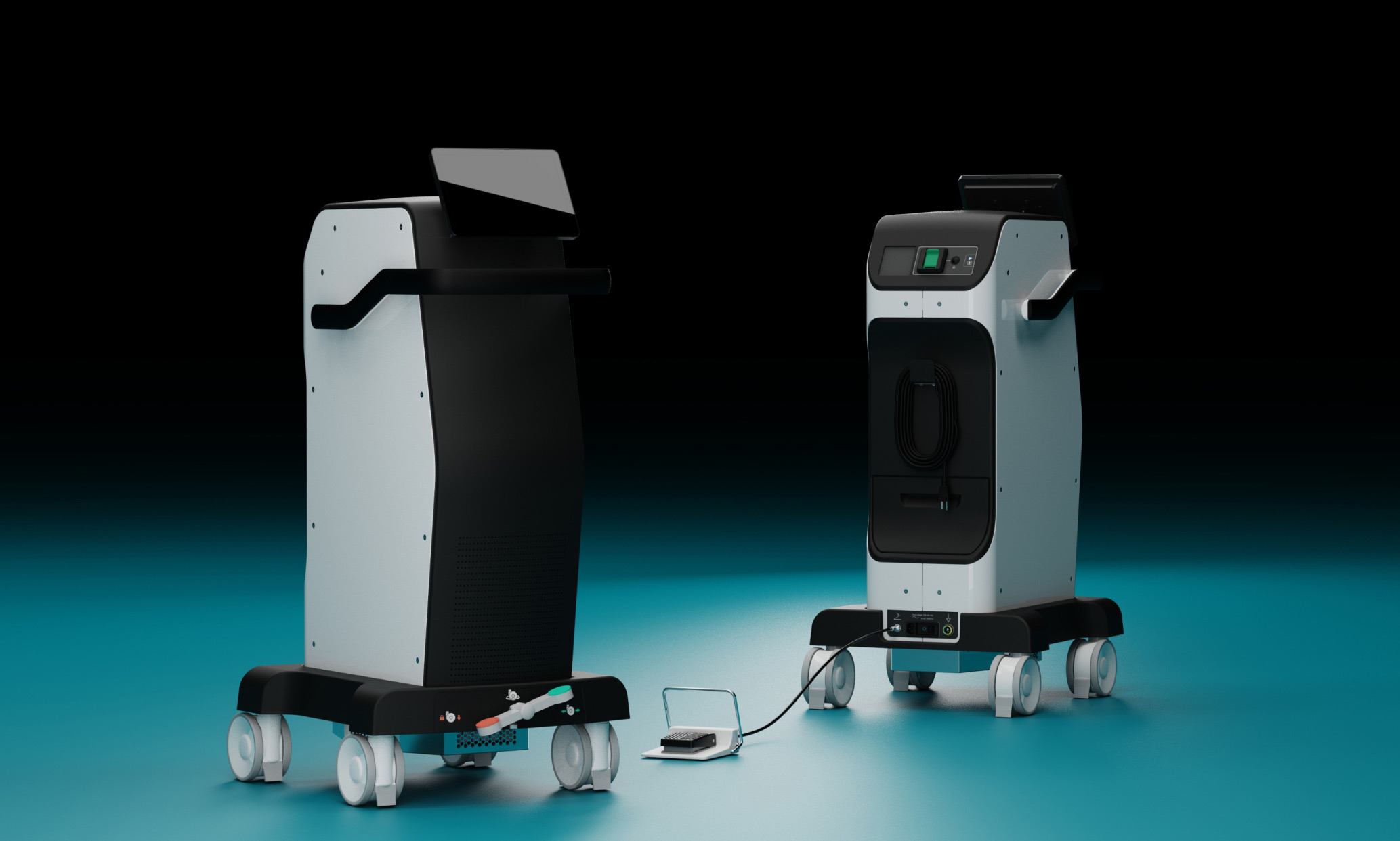
4 Best Practices for Achieving Successful Medical Device Design
Successful medical device design demands a strategic approach that incorporates established best practices.
1
Adopting an Iterative Design Process
An iterative design process enables continuous improvement of the medical device throughout development. To achieve this, each version must move closer to the final product. Designers engage in prototyping, testing, and fine-tuning phases to ensure the design evolves efficiently. This approach also fosters innovation at every stage while maintaining functional and regulatory requirements.
Rapid Prototyping
Rapid prototyping is an essential component of the iterative design process. It enables designers to quickly create functional models of the medical device at various stages of development. These early prototypes help visualize the product and test basic functionalities, allowing for the collection of initial feedback from stakeholders and users.
Testing
Through testing, designers can identify design flaws or potential problems at an early stage, allowing them to reduce risks and make informed decisions before initiating costly manufacturing processes.
Design Refinement
Design refinement is a continuous improvement process based on test results and user feedback. Each iteration, followed by testing, provides data to improve ergonomics and functionality of the user interface. Successive design modifications also enhance the safety and effectiveness of the medical device.

Get a free, 45-minute consultation with our industry-leading experts
2
Designing With a User-Centered Approach
User-centered design is a fundamental principle in the development of medical devices, as it helps create a safe and satisfying user experience.
Usability
Usability refers to the ease and efficiency with which users interact with a medical device. In high-pressure environments such as hospitals, the product must be operable with minimal training or instruction. Designers can achieve this by creating intuitive interfaces, providing clear instructions, and ensuring a seamless user flow that integrates smoothly into medical procedures.
Accessibility
Working on a product’s accessibility involves taking measures to ensure it can be used by a diverse range of people, including those with disabilities or other limitations, such as visual impairments, reduced mobility, or limited dexterity. It also includes adapting the device for different cultural and linguistic contexts.
Safety
Safety is a top priority when designing a medical device to ensure it does not endanger the user or the patient. To achieve this, the device must pose minimal risk while still functioning properly under all conditions of use.
Human factors engineering plays a key role in identifying potential risks, particularly through use-related risk analysis (URRA).
Reliability
Most medical devices function in environments subject to severe stress, where failure is not an option. A reliable device operates without malfunction, maintaining consistent performance throughout its usage.
Aesthetics
Elements such as color, shape, texture, and material choice shape the aesthetic appearance of a medical device. They can also reflect brand identity and help differentiate the product in a competitive market.
Ergonomics
Medical devices must be designed for easy handling, reducing user discomfort during use. This is where ergonomics comes into play, considering factors such as grip, weight, and positioning in the product design.
3
Establishing a Traceable Design Process
Regulatory bodies such as FDA, Health Canada, and EU MRD, require traceable design processes to pass review, thereby enhancing product reliability and mitigating development risks.
ISO 13485 Requirements
ISO 13485 is an international standard that guides medical device development, ensuring compliance with safety and effectiveness requirements.
Compliance with ISO 13485 involves producing comprehensive documentation, including user manuals, technical files, and risk analysis, as part of the medical device design process.
Design Documentation
This trail is crucial when submitting the device for regulatory approval, as it demonstrates compliance with established standards and regulations.
Change Management
In an iterative design process, changes are inevitable, often arising from testing results, stakeholder feedback, or evolving user requirements.
4
Handling Risk Management in Medical Device Design
Effective risk management is essential when designing a new medical device, as it guarantees safety, reliability, quality, and compliance with regulatory requirements. Throughout the design process, it allows risks to be identified, assessed, and mitigated, with the aim of protecting future users.
Risk Management Framework
ISO 14971 is the standard for applying risk management to medical devices, offering a systematic approach to identifying, assessing, and controlling risks throughout the device lifecycle. It provides a framework for addressing potential risks, from design flaws to use errors, and for developing strategies to mitigate them. Key activities include risk analysis and risk control.
Design Controls
They help ensure that the device functions as intended and mitigate potential risks. Implementing this approach requires careful consideration of design inputs, design outputs, and verification tests, all of which play a crucial role.
Regulatory Compliance
Manufacturers of medical devices must comply with various international standards and guidelines. These standards ensure that all marketed medical devices undergo rigorous risk assessment and that potential hazards are thoroughly addressed.